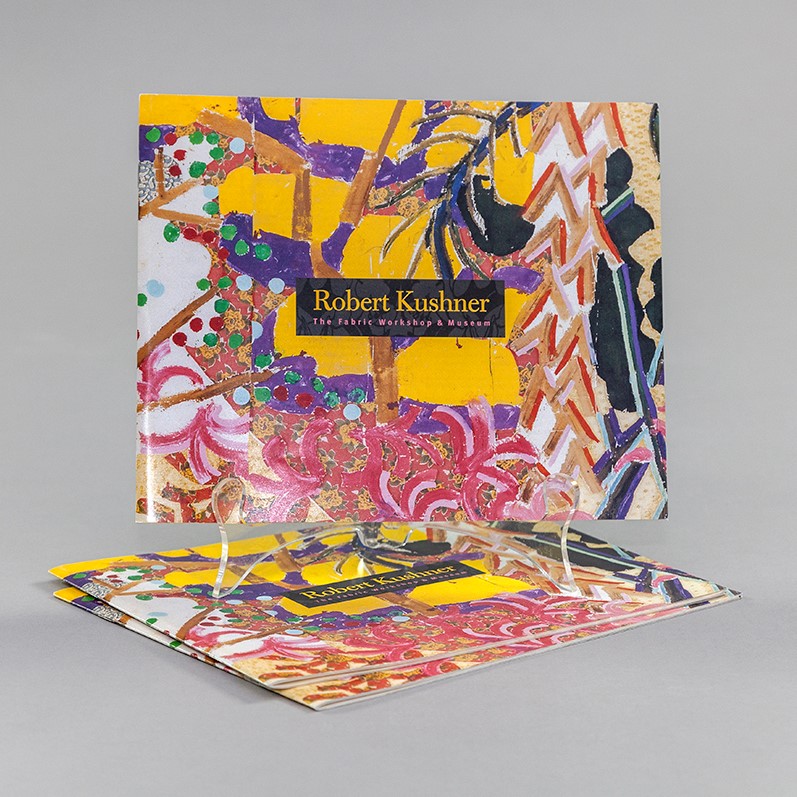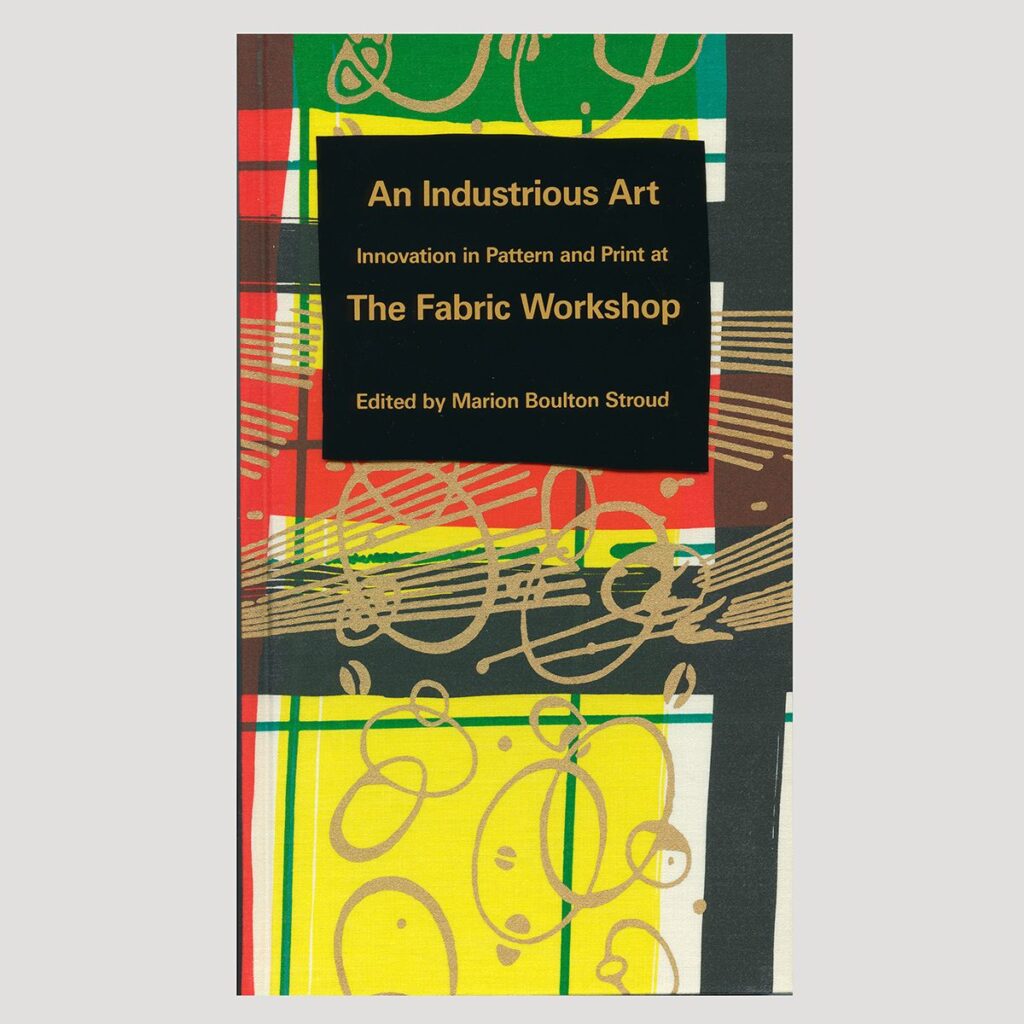Selected as FWM’s very first Artist-in-Residence in 1977, Robert Kushner had already been at the forefront of the Pattern and Decoration movement of the 1970s. Inspired by the dynamic nature of clothing and its relationship to the body, Kushner began experimenting with fabric in the early 1970s. These experimentations led Kushner to display his artwork in eccentric runway performances. Later, he began to realize the true duality of textile; it could be perceived as both a live sculpture in a performance and as a painting hung flat on a wall. With this new mentality, he would propel the use of decorative art and fabric design into the fine art canon.
During his residency, Kushner continued to push the envelope. He tested out unusual color combinations and material surfaces. Focused on screenprinting, Kushner created three works of art, two of which—Hawaiian Punch and Lillies— function as capes to be worn. The third, Dancers, is a printed and hand-painted banner that incorporates an assemblage of found materials and past costumes from his practice.
Two years later, Kushner returned to FWM to screenprint Louella, a cotton sateen wall-hung piece. In 1983, he would transform this figurative motif into an edition for the Friends of the Philadelphia Museum of Art as a series of 36’’ Indian Charka silk scarves presented in four separate colorways under the title Homáge à Vera. This work is made in reference to Vera Neumann, a fashion designer who first popularized the signature scarf.
Kushner was invited back once more to FWM in 1996 for a solo exhibition, Celestial Banquet. This exhibition featured work from his previous residencies along with three pieces constructed in the early 1980s. Janet Kardon, former director of the Institute of Contemporary Art, Philadelphia was invited by FWM to guest curate the exhibition.


